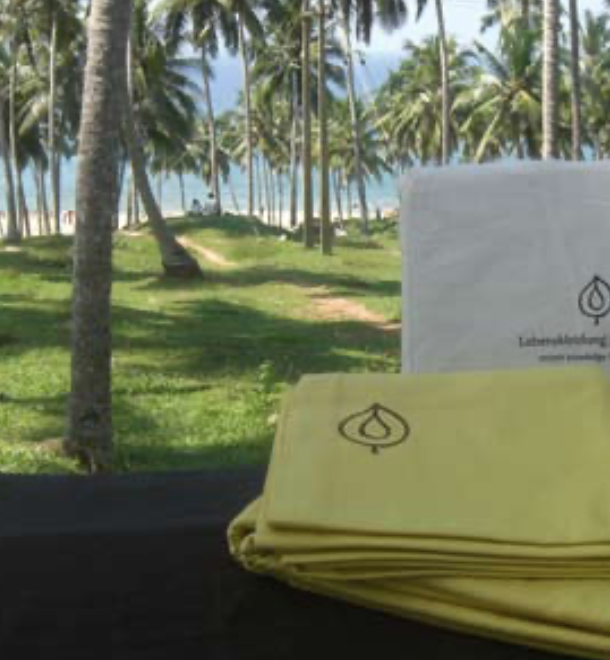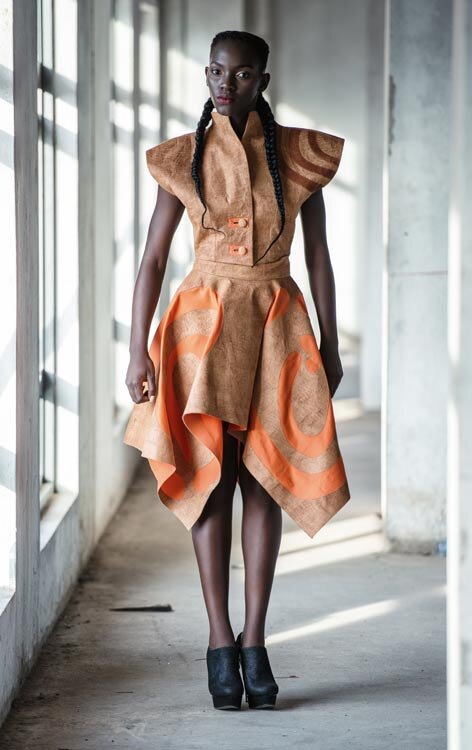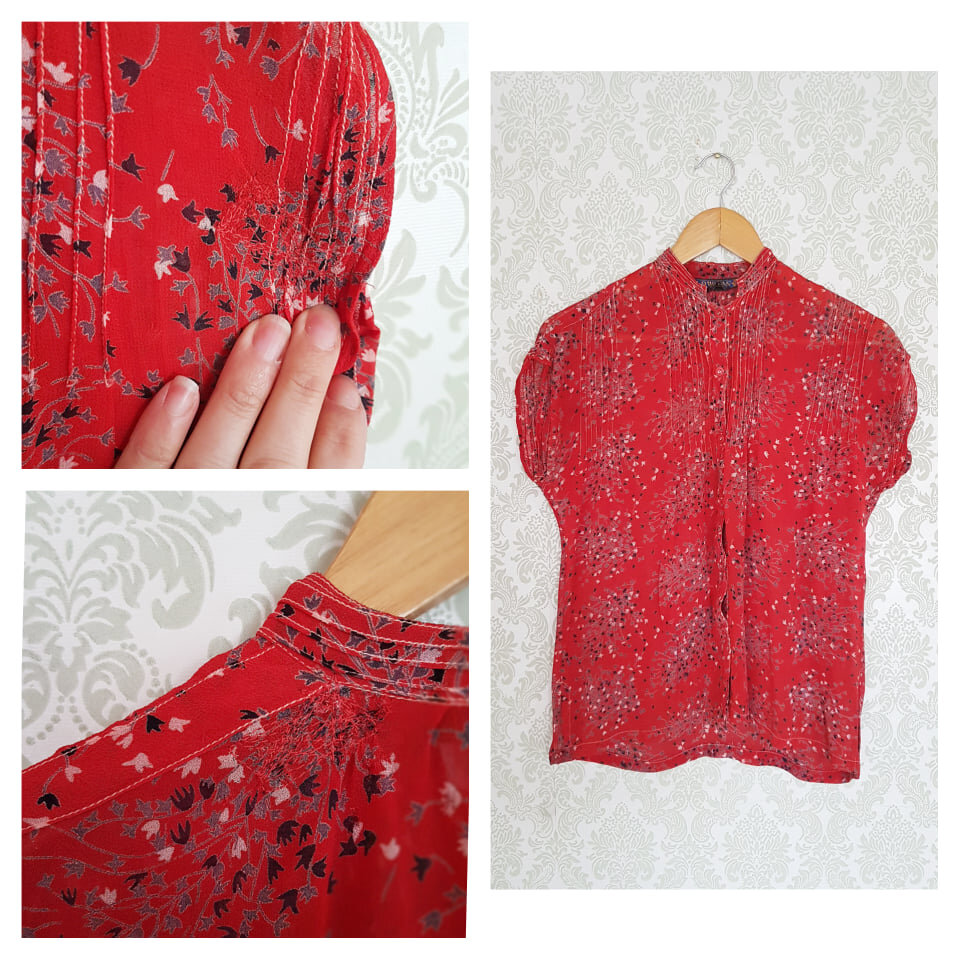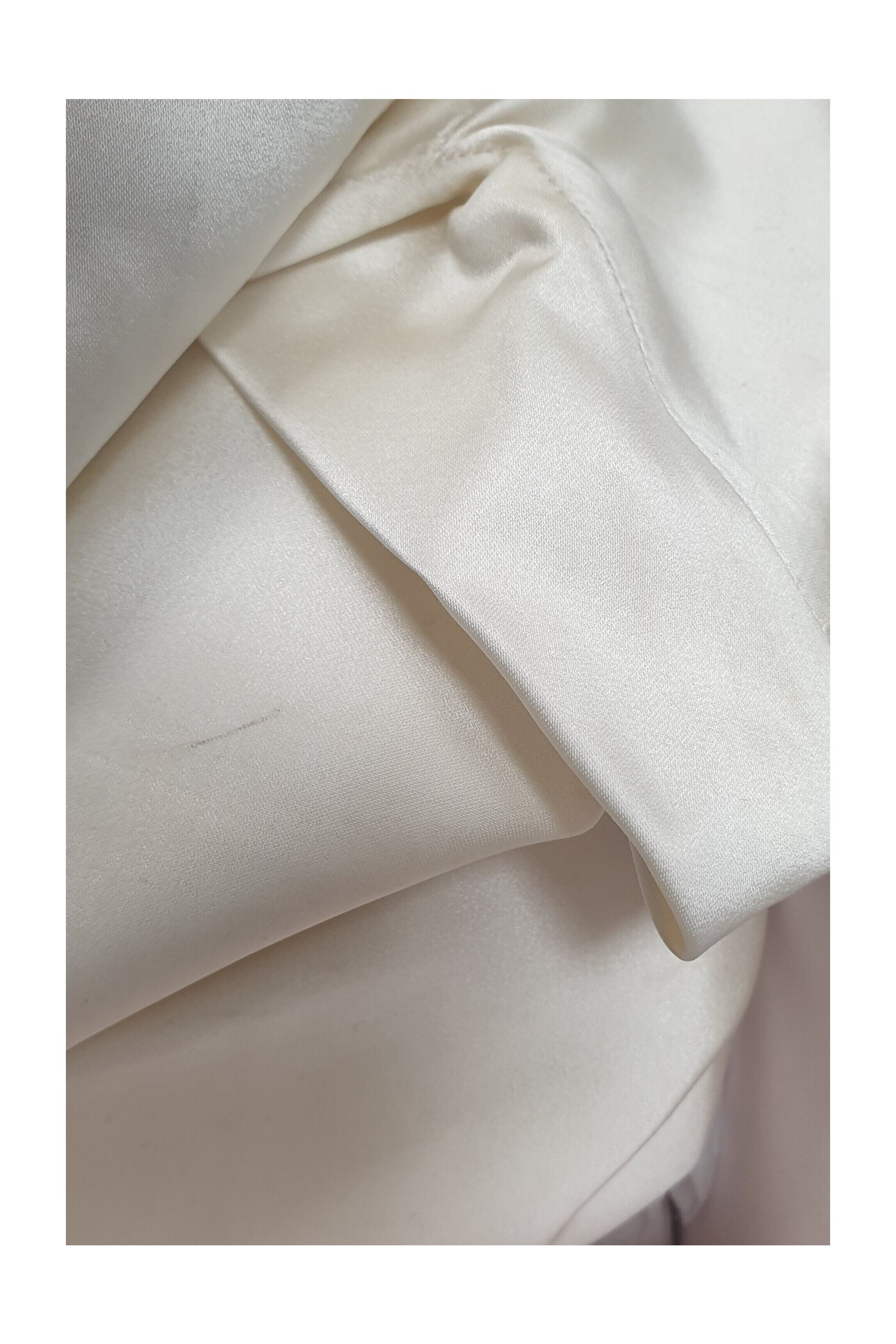New Episodes - NEW SEASON - ReGENERATE
The Material Revolution, the podcast has a second season coming soon!
At long last we are returning very soon with new interviews and conversations!
Thank to everyone who have inquired about when we were returning. This podcast emerged out of the pandemic as a means to bring more clarity and connection to a field that I am passionate about - textiles. I also wanted to use this communications tool as a platform to expand knowledge, inspire creativity and build community. The universal language that textiles possess is one that is complex yet interdisciplinary. The knowledge that our textiles embody is not only a reflection of a symbiosis between our human history and our understanding of nature but it requires an ability to interpret intepretors.
Over the years this understanding has shifted and those who possessed the skills and ability to practice interpret this language and the associated textile knowledge systems with them have been disrupted due to mass production and commercialisation. education that needs to be embodied before nature of textiles and the powerful role textiles educate and empower one another
During the break, I returned to lecturing with a unpredictable schedule that made it difficult to research and produce this series. Now that I have transitioned my energy back into my practice, I am currently pursuing material research experimentation using UK wool sock manufacturing waste and wool waste as part of my practice led PhD research at Kingston University London. I am lecturing part time but have the space to create new content for you all! Something that I am not only excited about, but passionate about too!
That said, this break allowed me to reflect and rethink about what I learned in the first year of producing this podcast. What I can do better, how I can make this more streamlined, increase engagement, consider sponsorship, etc. Given that this is a labour of love and completely self produced, this podcast brings me joy and I know that from the feedback that I have received from friends, colleagues and industry professionals that I must continue to serve in this manner.
I am looking forward to producing this next season where the focus will be on ReGeneration. In this series, expect interview from varying experts, practices and experiences. I can guarantee it is going to be great!
Sustainable Fashion Week UK + The Material Revolution
Sustainable Fashion Week UK +
The Material Revolution
Material Revolutionaries - Creative Reuse + Tools of Transformation
In celebration of Sustainable Fashion Week UK, The Material Revolution is hosting a special event on September 17th, 2021 from 15:00 - 17:00 (GMT - London, UK).
Please join us for an online panel discussion on creative reuse with designers Jose Hendo (UK), Melissa Ferreira Schwager (Germany/Canada), Sylvia Calvo (Spain) and Jane Ziemens (Australia).
This conversation brings together the voices and practices of designers who specialise in creative reuse. It is a unique opportunity to bring each of these women together to the table to share their inspiring stories, how they are inspiring community and what their tools of transformation are.
This is a free online event for you to attend and there will be an opportunity to ask questions at the end.
email us at thematerialrevolution@gmail.com.
Special Event:
Conversation - Material Revolutionaries - Creative Reuse + Tools of Transformation
In celebration of Sustainable Fashion Week UK, The Material Revolution is hosting a special event on September 17th, 2021 from 15:00 - 17:00 (GMT - London, UK).
Please join us for an online panel discussion on creative reuse with designers Jose Hendo (UK), Melissa Ferreira Schwager (Germany/Canada), Sylvia Calvo (Spain) and Jane Ziemons (Australia).
This conversation brings together the voices and practices of designers who specialise in creative reuse. It is a unique opportunity to bring each of these women together to the table to share their inspiring stories, how they are inspiring community and what their tools of transformation are.
This is a free online event for you to attend and there will be an opportunity to ask questions at the end.
To register visit Eventbrite or visit https://www.eventbrite.co.uk/e/sfw-material-revolutionaries-creative-reuse-tools-of-transformation-tickets-168601897815?utm_campaign=post_publish&utm_medium=email&utm_source=eventbrite&utm_content=shortLinkNewEmail
Memorable Textile
Memorable textile - Adhesif Clothing - Episode 8 - Melissa Ferreira Schwager
I invite each guest to share a memorable textile or garment at the end of each interview.
This segment is inspired from when I was lecturing in textiles to fashion students. I used it as a creative tool to introduce themselves in a less vulnerable way.
The outcome of this simple exercise resulted in the development of unexpected friendships and collaborations and expanded our knowledge and relationship to one another. We all share a story about a garment or textile that we have a relationship.
So I ask, what is yours?
Below are some images from each guest featured on our podcast. If you want to learn about our guests and their most memorable garment or textile, head over to our Instagram page as we will include this in our series of weekly highlights. #memorabletextile
Episode 1 - Benjamin Itter
This is one of the first things we made. Fair Trade organic cotton from the lovely Appachi Cotton project in Pollachi Tamil Nadu, dyed herbally with medicinal plants and load of tumeric in Balaramapuram, Kerala. Till today I keep those sheets which mark the beginning of our Lebenskleidung journey and after so many washes the quality of the organic cotton is still extraordinary. That is a gentle "sleep-reminder" that sustainable textiles are about longevity.
Episode 2 - Allan Brown
The piece of cloth I have chosen to share/ that means the most to me is the first little piece I wove from nettles. It was such a powerful moment, the realisation that it was indeed possible to do and furthermore could be done so simply, directly and with few resources...other than time...lots and lots of time.
Episode 3 - Shreyans Kokra
This ball is from my childhood. I used ot come home from school to play with the ball and for me it always brings good memories. I still have this ball and it continues to bring me good memories.
Episode 4 - Jorie Johnson
Turkish Shepherd’s cloak or kepenek as it is also known. This wool felt garment serves as a form of shelter, piece of clothing, blanket, etc. It serves all the needs and protection that a shepherd requires when he is out tending the sheep day/night, in all weather conditions.
Episode 5 - Rosaria Marraffino
This garment means a lot to me, since it belonged to my mother, and has almost for almost 40 years.
Episode 6 - Mary Jaeger
Chinese Apron Skirt Quin dynasty (1850-1920) - This pleated an embroidered historical chinese garment made me wonder who was the women who wore this dress - I channeled a woman named RUBY. This got me thinking about what who would RUBY be today and what would she wear in 2020.
Episode 7 - Jose Hendo
Identity My Way. This garment is made from a single piece of barkcloth, the only cut made was in the opening so that the model could get into the dress. This particular piece means alot because it reflects my Ugandian heritage and British influence. This design also has my fingerprint carved into the cloth to represent my identity - my way.
photo by: Giulio Molfese Photo4fashion. 2015
Episode 8 - Melissa Ferreira Schwager
This favourite blouse has travelled throughout India, it was the first garment that was selected while I was there as a vintage buyer. It has been mended many times over the years and each time I see it, it takes me back.
Episode 9 - Studio Billie Van Katwijk
This little fox belonged to an auntie and it came from a different time where femininity was expressed through accessories such as animal furs or leather gloves. I have had this fox since I was a child and although parts of his coat have now felted and he is missing his tail like the story of Fantastic Mr. Fox, I am compelled by its personality and this continues to bring me comfort.
Episode 10 - Lisa Simpson Agente Costura
This is a vintage skirt I acquired from a friend in Brazil. I transformed it so I can wear it as a dress and a skirt and this piece has travelled with me throughout Europe, Asia, Canada, etc. Its versatile and easy to care for - the perfect travel companion.
Episode 11 - Sylvia Calvo
This is a detail image of my mother’s wedding dress. I am hoping to make a copy of it some day but it was made by one of the top tailors in Barcelona of its time. It is both machine and hand stitched and embodies a craftmanship like no other.
Episode 13 - Sigi Ahl
Heat Map
This textile represents the use of old clothing to produce a painting.
Episode 13 - Abigail Erikson
"khadi is silently teaching us patience, respect, and endurance."
-@selvedgemagazine
Khadi is a handspun, handwoven material that is generally cotton and is quite modest. I don’t think you can really appreciate Khadi until you’ve seen it be produced. It’s hard for the mind to grasp the amount of time and effort that goes into such a “simple” fabric.
Episode 14 - Kristina Ujhelyi
This is the first fabric sample I ever made using Ioncell technology at Aalto University to produce a sustainable man made cellulose fiber and fabric.
Episode 15 - Otto Von Busch
This is a vest that I have been applying and making patches for over the years. It is pretty much filled up now but as a metal head, there are some imaginary band names that are a play upon this and DIY culture
Why this podcast?
Hello and welcome to The Material Revolution!
This podcast came to life in late October 2020 as a result of being contacted by several industry related professionals inquiring about where to find correct information about materials and resources. Their common complaint was the fact that there was alot of confusing and contradicting information available and they just want to become better informed not just in their jobs as professionals but to make better decisions as a consumer.
Being that I am a practitioner/educator in textiles with a focus on sustainable practices I have experienced first hand the knowledge gaps that exists in the industry and in the education system that prepares students who work in the field - specifically in the field of fashion design. My education in the field of textiles began during my fashion design studies in the 1990’s. It was a very frustrating time period as it was clear that what was being taught was outdated. With manufacturing moving more and more offshore in Canada during the 1980’s/90’s the landscape and skills required to work in the industry was changing. Even worse, the accessibility to materials - the supply chain - was increasingly becoming more of a challenge. But from my perspective, there was bigger challenge we were facing and it had everything to do with our physical environment, our climate.
It was during this time period, by chance, I had access to and visited large landfills in southern Ontario and northern Michigan State. My boyfriend at the time was a truck driver and hauled trash to landfills around Greater Toronto, London and Sarnia, Ontario but it was when I used to hop into the truck and travel with him from the City of Toronto to Michigan state (USA) where the biggest landfills I have ever seen existed. The impact of this experience stills haunts me today but it did allow me to develop some insights very early on in my design training and career. The first being that I understood that if I was going to design and make in this world, that I had a responsibility as to what I put out there. The second was I felt that these large pits of land filled with discarded materials and resources where like large gravesites. I had a moment where I could imagine archeologists a few hundred years from now discovering these gravesites of materials and wondering what purpose did they serve and why they were there.
As a child I was already upcycling and learning how to sew clothes which is what lead me to study fashion design initially. I was also fortunate to study at a highschool that allowed me to develop a fashion focus which prepared me in some ways for entering my post-secondary studies but it left me feeling quite disillusioned when it came to furthering my skillset and knowledge. Although I couldn’t quite articulate at that stage in my life what knowledge gaps existed, I did know that I wanted to create work that empowered my ability to design responsibly and I understood that the way to do this was to learn more about textiles. I felt that to be a designer, like an architect, you need to know your materials before you build with them. The biggest knowledge gap in my fashion training was a lack of emphasis on textiles. Yes, it is taught but textiles is a complex field and it does require a form of tacit learning and knowledge in order to fully embody the knowledge required in order to properly design with them. It is really hard to learn everything about textiles in a fashion degree and you really just learn the basics until you develop a focus in a specialised area (knitwear, lingerie, formal, menswear, etc.). Although I specialised in knitwear, for me, my path was to be very different. I wanted to work with recycled, deadstock and waste textiles. In the 90’s, alternative approaches to designing and working with discarded waste materials wasn’t encouraged. I was told there was no market for what I wanted to do and that it wasn’t sustainable. I knew different. I was determined to learn more about textiles, learn its craft and to develop clothing that represented the future.
Upon furthering my studies in textiles, while I was a student, I came to develop a textile process using recycled pantyhose (not used, pre-consumer) that would later become a signature textile and the foundation material that would establish my studio Sans Soucie in Vancouver. Using scholarship money I was awarded from the textile program after graduating, I chose to set up my first studio. The first 5 years (2003-2008) was extremely rewarding, creative and successful. I received media attention very early on in my career which led me to showcase and exhibit work internationally on runways, galleries, boutiques, etc. I was the recipient of severals awards and grants (national/international) and recognised by my peers and by industry as a leader.
It was during this time, I was approached to teach at a small couture fashion design school in Vancouver called Helen Lefeaux School of Fashion Design. Through word of mouth they had hard about my specialised work in textiles and fashion and invited me to teach their courses in textiles (Textile Science, Surface Design for Fashion). I hadn’t considered teaching at this stage in my life because I was only 25 and in my 2nd year of my design practice. I accepted the position part time because I understood the knowledge gaps that existed in textile courses being taught in the field of fashion. It was also a perfect opportunity to contribute to change and highlight key components that were reflected in my practice - sustainability, craft and creative reuse.
This was my first teaching position which did lead to other positions and offers (Canada/US) but my goal was never to become a full time educator. My role was to be in the studio and teaching part time gave me the space to continue filling those knowledge gaps.
But its important for me to stress that I understood my role as an educator didn’t just exist in the classroom - it was a full time role in every aspect of my career. What I mean by this is that I found myself having to continually educate everyone about textiles I came in contact with. It was natural that I needed to educate media, clients, and industry professionals about my unique material process and the collections I produced but it didn’t just stop there. I identified that the success of my studio, my research and practice relied upon the relationship between textiles, creativity and communication. What I was developing and producing in the studio for industry and clients informed how I chose to engage and educate students. From this exchange, conversations with students developed my ability to become a better communicator, a better listener and educator in every way, shape and form. It also led me to understand that education and learning is integral to the material research I undertake in working with waste textiles and that it motivates and supports its sustainability, creativity and growth.
As I bring this first post to a close, its important for me to address that textiles are and continue to be my biggest teacher in life. It has provided me with experiences as an artist, entrepreneur and educator that has enabled me to develop an autonomy in the field of textiles . It has come to inform my personal, spiritual growth and development and inspire the way I build relationships. It has given me the opportunity to bring voice to its complexity and versatility in ways I never could have imagined - including the birth of this podcast.
So, I think by now that it is clear that I am really passionate about textiles. I am looking forward to sharing my knowledge and experience along with other expert voices with all of you. There is still so much to discover, learn, and discuss about textiles - let’s do it together.





















